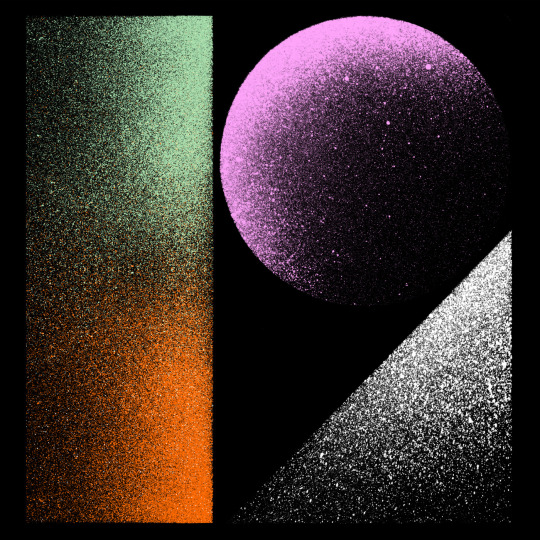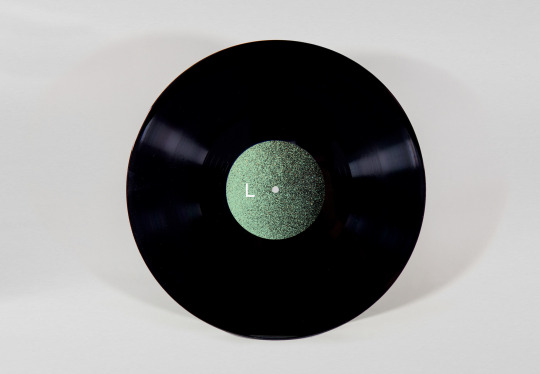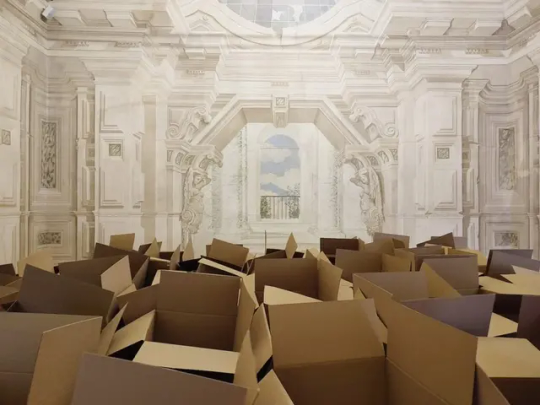#zimoun
Explore tagged Tumblr posts
Text
youtube
zimoun -- dust resonance
2 notes
·
View notes
Text
Exploring Zimoun's Sound Sculptures: Compilation Video 4.3
A new post after +6 years, this time (again!) about Swiss kinetic/sound sculptor Zimoun. He recently published Complilation Video version 4.3 which provides an overview of his work so far: I still like his work after first seeing it at the Dutch Design Week in Eindhoven, back in 2014. As the Dutch Design Week 2024 starts tomorrow as a far more commercialized/sponsored/co[orate event than back in…
0 notes
Text
youtube
Swiss sound artist Zimoun uses a large number of common materials in his sound art installations, and by changing the form of the materials and the way they are used, he creates subtle audio-visual art installations. I was reminded of the sound of waves crashing against a rock wall when I watched the project's foam balls being blown by a blower at high speed.
3 notes
·
View notes
Text

Zimoun
62 prepared dc-motors, cotton balls, cardboard boxes 60x60x60cm
0 notes
Text
Zimoun: Exploring Minimalism, Chaos, and the Intersection of Technology and Nature
Zimoun creates art that exists on multiple planes and that hits his audience in waves that compliment each other and draw us deeper into the sensory universe he creates. Visually, his works, often consisting of scores of identical constructions engaged in repetitive actions. In one piece shown at the Art Museum Lugano, Switzerland, 36 ventilators, 4.7m3 packing chips, (2014) Zimoun employed…
#Africa#arts#Asia#Australia#Europe#Exploring the Nexus#North America#society#South America#technology
1 note
·
View note
Text
Soundscape Art - Artist Research 4/2/25


links:
Under the Bridge by Ben Leslie
youtube
Sound Art by Zimoun
youtube
Lines and Spaces by Marie Hanlon and Rhona Clarke
youtube
Soundscape Black by Ann Verdonck
youtube
Soundscape by Giovanni Piacentini and Pablo Davila
youtube
0 notes
Text

23 Kasım 2024 tarihli program kaydı.
Güncel drone ve ambient kayıtlardan bir seçki // A selection of recent drone and ambient recordings. Download.
01 – Başak Günak – Foraging 02 – Marco Baldini – Ombra Con Coda (excerpt) 03 – Henry Fraser – Breath Line (excerpt) 04 – Michael Santos – Defocus 05 – Far Away Nebraska – Mentre Penso A Un Amico 06 – Sandro Mussida & Francesco Fabris – ~aeolian (excerpt) 07 – Zimoun – DR Part 1 08 – Marcus Fjellström – Last Morning Watch VII 09 – Erik K Skodvin – The Empty Void Below 10 – Glåsbird – Søvnfjord 11 – Henrik Meierkord, Knivtid – I Ett Annat Land
1 note
·
View note
Text
Two sound Artist that i decided to research and look into more of there work were Zimoun and Ryoj Ikeda.
Zimoun is a self taught artist from Switzerland who is best known for his sound sculptures and sound architectures. He uses different combine materials such as plastic bags, microphones , old furniture and wires. And I love how he is able to find use for such items to create art and sound.
Here’s an example of one of his work it’s a instalment of a rolling wave that’s made out of package peanuts but it’s such an eye catching piece as in darkness it looks like that room is engulfed by a beautiful white wave.

Ryoj Ikeda who’s a Japanese visual and sound artist. I know some of ikedas work and really like how he uses sound in variety of raw states such as sine tones and noises to make eye catching and really interesting pieces.

This piece is called test pattern and is made up of using and converting different types of data such as text, sounds, photos and movies and turns them into barcode patterns and binary patterns which I really find interesting and is one of my many favourite pieces of Ikeda.
These two artist create different work form one another but one thing I really like about them both is how captivating and eye catching there work can be.
0 notes
Text
Schau dir Zimoun : 25 woodworms, wood, microphone, sound system, 2009 an
https://vimeo.com/6191050
Was kann der Zauberwald. Wo finden wir evtl. Schnittmengen zwischen Bühne und Sound und Bühne und Kostüm
0 notes
Text
Old and new Swiss art noises: Tinguely and Zimoun
I have been an admirer of the work of Swiss artist Jean Tinguely almost all of my life. It started while at university, when I bought this poster of a Tinguely exhibition at the Tate Gallery in London. Since then I have been collection exhibition posters and graphic works of Tinguely and other artists and started to develop an interest in technology and media art. Today, I stumbled upon another…

View On WordPress
0 notes
Text
out now: JULIAN SARTORIUS & Ensemble This | Ensemble That - RLLRLRLLRRLRLRLRLLRLRLR

Release Date: November 24, 2023 Format: vinyl LP + digital Order on: Bandcamp / Kudos Pre-save on Spotify + co Watch a video version of the piece.
«What you do is a fundamental question. But it’s how you do something that ultimately determines the effect.» — Julian Sartorius
With ‘RLLRLRLLRRLRLRLRLLRLRLR’, Swiss drummer and sound artist Julian Sartorius presents his third album in three years. Together with ‘Ensemble This | Ensemble That’ Sartorius has created a mesmerizing 39-minute percussion album that conclusively expands his artistic output. For the first time, an ensemble plays an idea conceived by Sartorius, while he assumes the role of an interactive conductor, manipulating the sounds made.

Sartorius is known for his fluid and versatile solo performances in which he continually modulates the sound of his instruments, adding objects and progressively unfolding his sound world. The idea of expanding this practice was already gestating when the ‘Ensemble This | Ensemble That’ invited him for a collaboration. Together with the drummers and percussionists Brian Archinal, Victor Barceló, Miguel Angel Garcia Martin and Bastian Pfefferli the concept was further explored, elaborated upon in detail, and finally realized.
‘RLLRLRLLRRLRLRLRLLRLRLR’ is both title and score for the ensemble’s four percussionists. The pattern, consisting of 23 individual beats, is played continuously by the ensemble while Sartorius gradually makes alterations to the instruments played. The result is a piece that has a sustained rhythmic flow yet is perpetually changing. Sartorius’ interventions and the precise musicality of the ensemble allows the listener to discover an expansive array of moods and intensities.

The album is structurally recursive but develops an almost mystical magnetism through an odyssey of diverse musical landscapes. Sartorius explains: «It amazes me deeply how much the sentiment can change based on a musical mood - this sense of curiosity is made audible with this album.» The album recording itself is designed as an endless loop: at the end of the recording, the ensemble’s sound has returned to its starting point, thereby completing an endless, self-contained cycle, with no beginning or end. In this way, Sartorius also echoes his 2021 album ‘Locked Grooves’.

Julian Sartorius’ precise and multi-layered rhythmical patterns are keen excursions into the hidden tones of found objects and prepared instruments, bridging the gap between organic timbres and the vocabulary of (experimental) electronic music. He has released numerous solo albums, creates audiovisual art works, collaborates with musicians, writers, and artists, and performs live in intimate venues and on festival stages.
Ensemble This | Ensemble That (ET|ET) have established themselves not only as interpreters of contemporary music, but also as collaborators to a wide range of artists including projects like Zimoun, Myriam Bleu, Strotter Inst., Lê Quan Ninh, Marko Ciciliani, Jürg Frey, and Michael Maierhof, amongst others.
___CREDITS Composed by Julian Sartorius in collaboration with Ensemble This | Ensemble That Recorded by Grégoire Pasquier at Studio de la Fonderie Edited by Julian Sartorius Mixed by Grégoire Pasquier and Julian Sartorius Mastered by Rashad Becker at Clunk Mastering Cut by Adi Flück at Centraldubs Graphic design by Sarah Parsons
This is OUS046
0 notes
Text
ModularGuitarFields I-VI - Zimoun (2023)
"... Zimoun is a multi-disciplilnary Swiss artist who is best recognized for his immersive and site-specific installations with cardboard, DC motors and other industrial objects to create large-scale installations of orchestrated noise and movement. His mechanized environments have been shown in prestigiuos museums and galleries worldwide. On his latest musical release, ModularGuitarFields I-VI is entirely based on the sounds of a Tenor Baritone Guitar, combined with select elements of a Modular Synth and a vintage 1960s Magnatone Amp. ModularGuitarFields I-VI encompasses expansive and atmospheric realms, showcasing Zimoun’s passion for raw, warm sounds, as well as minimalist concepts and approaches. ..."
0 notes
Text

Zimoun. Villa Manin per l’arte contemporanea
Le creazioni dell’artista svizzero Zimoun sono macchine che generano ritmi e rumori in dialogo con gli ambienti in cui sono collocate
0 notes

